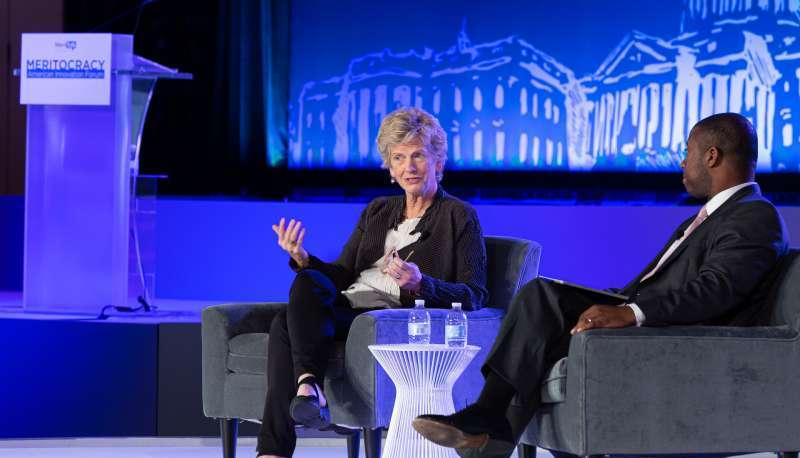
The head of the General Services Administration (GSA) said at the agency’s Federal Digital Experience Summit on Tuesday that GSA is working hard on numerous initiatives to improve digital services across the Federal government, and to become “better partners” to companies that do business with the government.
On the digital services front, GSA Administrator Robin Carnahan pointed to the U.S. Web Design System as the first example of a project that showcases how GSA is “delivering great service” and that the agency wants to continue to invest in.
“It’s already helping 91 different agencies design their websites to make sure they’re accessible, and mobile friendly, and easy to use. Over 500 government websites use it now and it gets over a billion page views every year,” she said. “I want folks in industry to take a look at that that U.S. web design system – we want that to be a part of every single public facing website, and we want our contracts to include that.”
Next on Carnahan’s list is GSA’s Login.gov service, which she said is an example of how the agency is “using technology for the public good.”
“It provides over 50 million Americans with easier access to benefits whether they’re veterans or farmers or students or others,” Carnahan said. “We have designed that from the beginning to be secure, to include two-factor authentication, to do all of these things that we know are important to prevent fraud but also guarantee access.”
“Login.gov is soon going to be piloting facial matching technology to allow people to remotely verify their identities,” she said. “It’s just one example of how we intend to ethically deploy technology in the projects that we’re undertaking.”
Carnahan also highlighted the Technology Modernization Fund (TMF), noting that GSA has pumped nearly $1 billion into 53 projects across 30 agencies over the last six years.
“We think it is a perfect example to avoid that all-too-frequent thing we see in government where every agency is reinventing the wheel because the TMF team has a great view across government about what needs are,” Carnahan said. “We called on agencies to bring us projects – whether it’s supporting the 21st century IDEA Act, whether it’s looking at AI related proposals, all of those things are important for the TMF and the people that we serve.”
The GSA lead said that the “bottom line” is that government and industry need to figure out ways to work together more seamlessly.
“We know that companies are rolling out new tech tools faster than ever, government needs access to those tools. But we also are very clear that it is not always so easy to do business with the government. It can be confusing, it can take a long time,” she said. “We’re trying to do better. At GSA, we want to be better partners.”
The first step in that effort, Carnahan said, is better transparency. She highlighted that GSA is currently working closely with agencies and industry partners to develop resources and buying guides that explain what and how GSA wants to buy technology and services.
The second thing GSA is working towards is improving the Federal Risk and Authorization Management Program (FedRAMP).
“We know it has to be more scalable, it has to be more secure, it has to be easier to use and I’m sure that you know that FedRAMP is the first security gate that every cloud product or service – it has to pass through before being deployed for government use,” she said.
“We know how important it is not just for government agencies to access the latest cloud services but also for businesses, small businesses in particular, who are trying to get into the government marketplace.”
The agency announced this week that it is launching a new FedRAMP board, replacing the Joint Authorization Board.
Finally, Carnahan said GSA is going to be shifting toward a more “user focused, agile contracting system.”
“You can expect to see contract language that looks a little different. That’s because we’re reworking contracts to make them more plain language to be clear about our expectations, to talk more about outcomes, and not just technical requirements that we’re interested in,” she said. “So keep your eyes open for that.”
Speaking at the same event, Federal Chief Information Officer (CIO) Clare Martorana reiterated that the citizen and digital experience initiatives that the Biden administration has brought forth over the past three years should serve as a guide to industry for what the government wants their help to accomplish.
“This is a 10-year revenue roadmap for you,” she said. “If you’re in the private sector and you’re selling goods and services to the Federal government, we are trying to outline a clear path forward,” Martorana said.
“Hopefully you can see where your company fits into that environment, where you can participate in that, and where you will have the opportunity to help us deliver for the American people,” the Federal CIO said.
